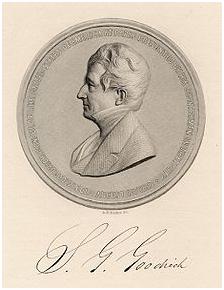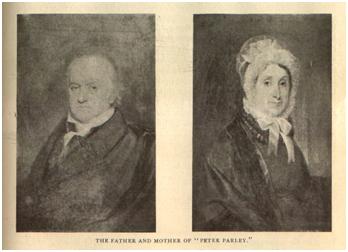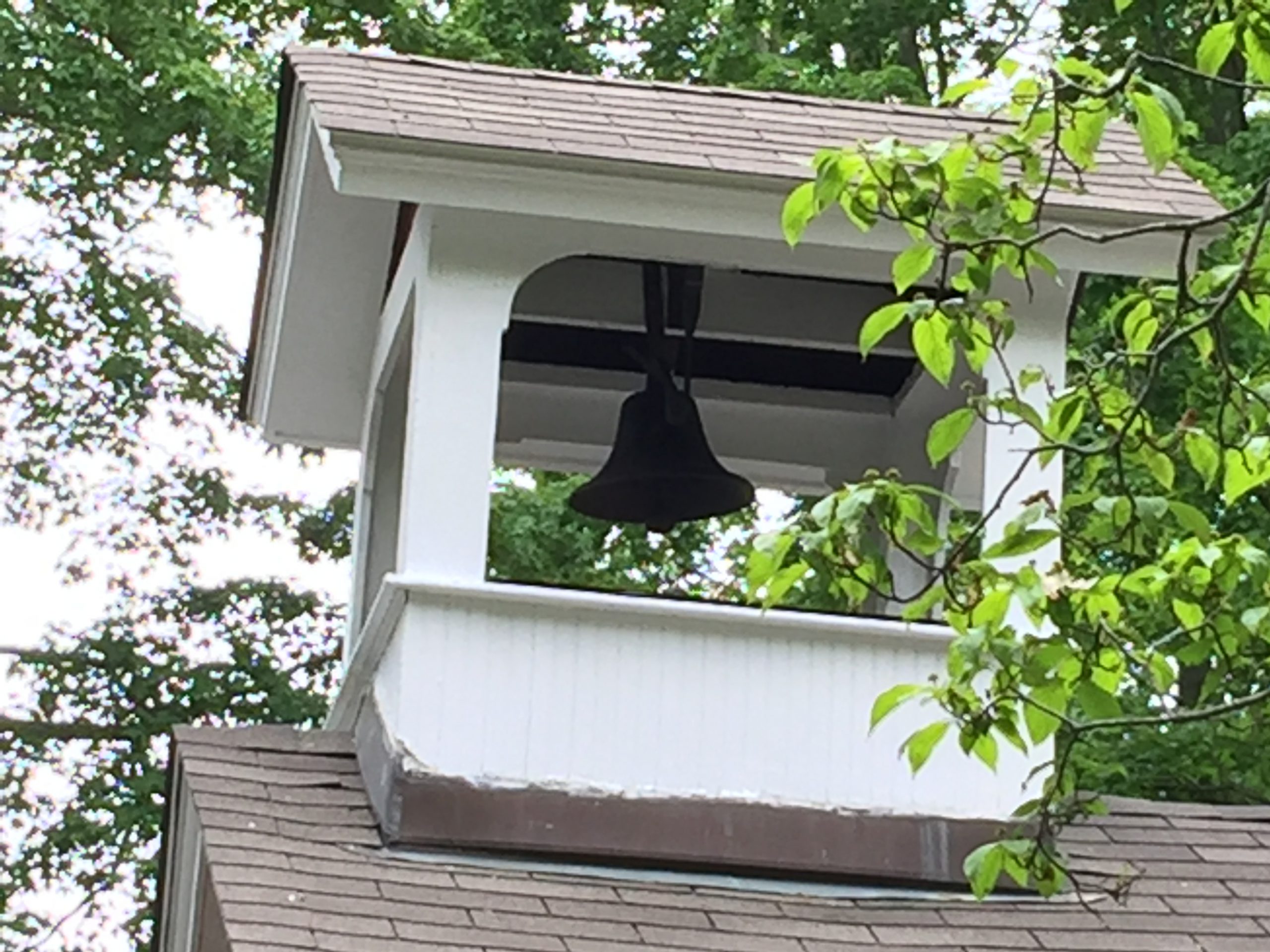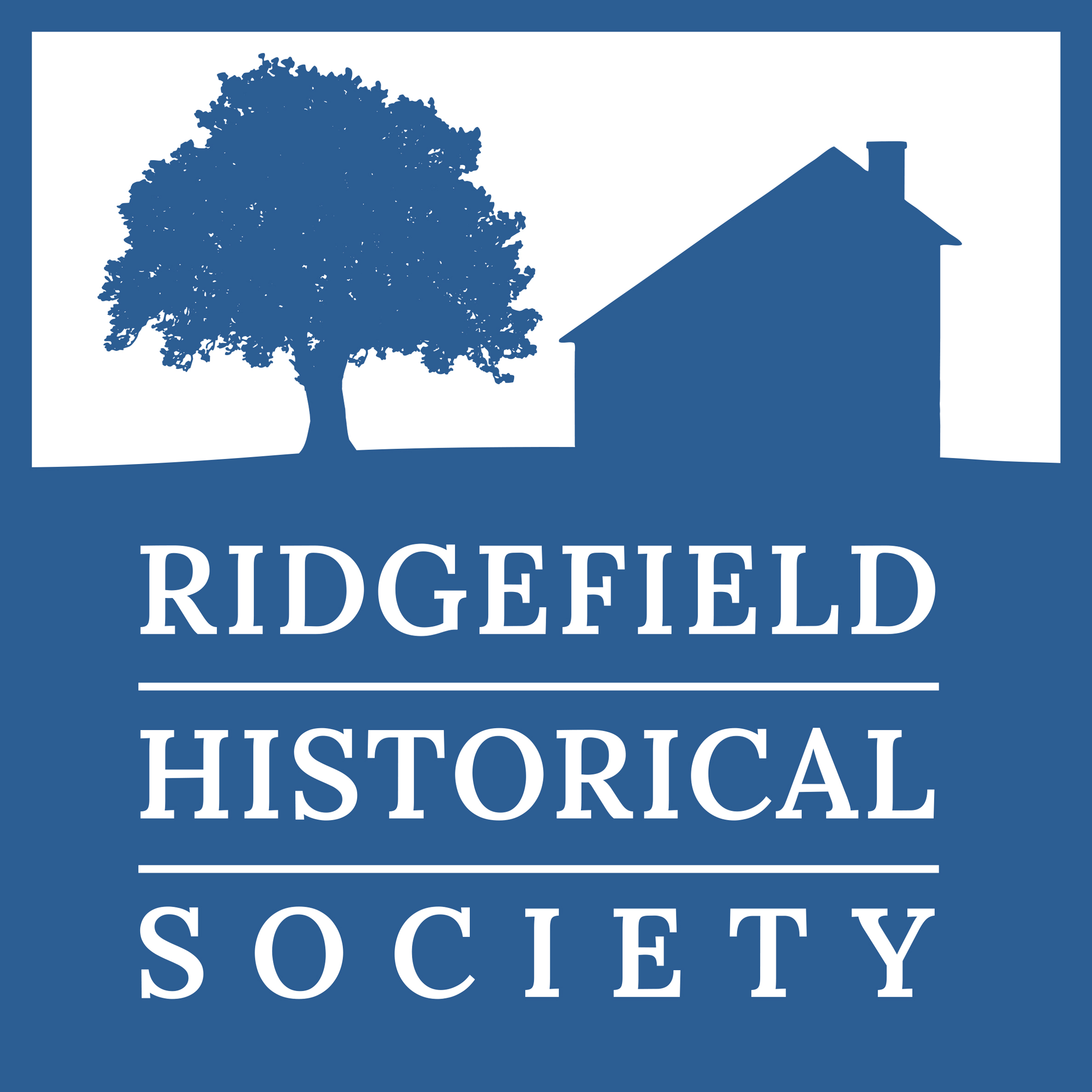Peter Parley Schoolhouse
The West Lane Schoolhouse
About the Schoolhouse
The Peter Parley Schoolhouse, also known as the West Lane Schoolhouse or the Little Red Schoolhouse, is located at the intersection of West Lane and South Salem Road (CT Route 35) in historic Ridgefield. The original schoolhouse was built in 1756 in a small triangle of town-owned land where Silver Spring Road met West Lane and South Salem Road. In the middle of the 19th Century, the current larger schoolhouse replaced it.
The Town of Ridgefield owns the building and leases it to Ridgefield Historical Society. The interior of the schoolhouse looks similar to the way it would have when its doors closed in the early 1900s. Period-appropriate desks, texts, workbooks, toys, and memorabilia fill the schoolhouse along with plaques noting the history of Ridgefield and its little red schoolhouses. The story of Samuel Goodrich (alias Peter Parley) comes alive with a video. Docents tell colorful stories about this charming, centuries old, country schoolhouse.
Upcoming Events
There is no Event
Virtual Tour
Four-part series; total time: 44 minutes
History of the Schoolhouse
The Schoolhouse in the 1700s
When the West Lane School was built in 1756, the town had been settled for nearly half a century. Education was always important to the town, beginning with its first minister, Thomas Hawley, who taught young scholars in the meeting house on the Village Green. By 1760 there were six district schools, supported by the residents of those parts of the town. Schoolhouses in New England were often constructed on the islands made by crossroads. In the case of the West Lane School at least, the land was also very rocky and unsuitable for any farming use. The initial building and maintenance of the schoolhouse were a community affair. Parents would lend a hand with their carpentry skills. Families would also supply firewood, for a fireplace at first and later for a woodstove.
Fortunately, there is an excellent account of what the schoolhouse was like at the turn of the 19th century. Samuel Griswold Goodrich, the writer of the Peter Parley stories, attended the school from 1799 to 1803. Although he remembers the school with fondness, he was appalled that children were taught using adult books or scary nursery rhymes. After completing his studies, he went on to rectify the situation, becoming one of the most famous children’s book authors of his time.
He later wrote an extensive account of what it was like attending the school and living in Ridgefield in his book Recollections of a Lifetime, Volume 1. The original building “consisted of rough, unpainted clapboards, upon a wooden frame. It was plastered within, and contained two apartments – a little entry, taken out of a corner for a wardrobe and the school-room proper. The chimney was of stone, and pointed with mortar, which, by the way, had been dug into a honeycomb by uneasy and enterprising penknives. The fireplace was six feet wide and four feet deep. The flute was so ample and so perpendicular that the rain sleet and snow fell direct to the hearth.” Describing the interior he notes, “we were all seated upon benches, made of what were called slabs – that is, boards having the exterior or rounded part of the log on one side: as they were useless for other purposes, these were converted into school-benches, the rounded part down. They had each four supports, consisting of straddling wooden legs, set into augur-holes. Our own legs swayed in the air, for they were too short to touch the floor. Oh, what an awe fell over me, when we were all seated and silence reigned around!”
Goodrich describes the exterior landscape as follows: “The ground hereabouts – as everywhere else in Ridgefield – was exceedingly stony, and in making the pathway the stones had been thrown out right and left, and these remained in heaps on either side, from generation to generation.” He recalls a nearby chestnut tree that the boys used to throw sticks and stones at to knock off the chestnuts.
Ridgefield was a farming community and they adjusted their schooling accordingly. Initially, there was a women’s school in the summer months attended by young children. The older children were needed on the farms. In the winter a male teacher was hired to teach the boys and girls in the neighborhood up to the age of eighteen or even twenty. Goodrich says as many as forty scholars could be crowded into this little building!
- What about eating & recess?
Scholars had one hour off from 12:00 to 1:00 to eat and play. This hour was called “nooning.” Students would bring their “dinners” outside and play for most of the hour anywhere they wished, as log as they could hear the school bell at 1:00 calling them back to classes.
Scholars brought their “dinners” from home in “berry pails” or baskets. Their mothers may have packed hard boiled eggs, apples, pears, bread with meat or lard, corn bread, cheese or sausages. In the winter they might bring raw potatoes that the teacher would put in a big iron bucket on the hot stove. By lunch time they would be hot baked potatoes. Students carved their initials into their potato to identify it.
The students’ only drink would be water from a bucket that the bigger boys filled. They all drank from the same tin cup or dipper! A second bucket of water would be kept in the room for washing hands.
During the early 1800s the old building was replaced with the current larger building. In the 1830s, before the Civil War, the blackboards were installed. In 1893 it was estimated that the yearly cost of a student was $8.01. (In 2010 the estimated cost per student was $7,830.) The current interior of the building is similar to the way it looked in 1895 with its black pot belly stove and iron and wooden desks.
In the early 1900s the schoolhouse sustained minor damage when one of those new inventions, the Model T car, failed to make the corner turn and crashed into it. A member of the prominent Pinchbeck family, John Pinchbeck, Sr, attended the school in the early 1900s. His writing book still lies in the classroom. In the 1970s a marble bench was installed outside the building and dedicated to his son for all the service he had done for Ridgefield as Tree Warden.
In 1915 the school bell stopped ringing and the flag was taken down. The schoolhouse closed its doors. Several schoolhouses were consolidated and students started attending the new Benjamin Franklin Grammar school on East Ridge. It remained a grammar school until 1927 when it became Ridgefield High School. Today it is the Richard E. Venus Municipal Building, often referred to by locals as the “old High School”.
The town of Ridgefield owns the little red schoolhouse and its grounds. For many years the Ridgefield Garden Club leased the site from the town. In February 2012 the Ridgefield Historical Society took over the lease.
Samuel Goodrich, alias Peter Parley
 Samuel Griswold Goodrich (August 19, 1793 – May 9, 1860), alias Peter Parley as he was known by his pseudonym, was born in Ridgefield, Connecticut. He was a prolific writer, with over 170 books to his credit, and is believed by many to have written the first American text books. Samuel attended the West Lane Schoolhouse, and he wrote about his experiences as a student there.
Samuel Griswold Goodrich (August 19, 1793 – May 9, 1860), alias Peter Parley as he was known by his pseudonym, was born in Ridgefield, Connecticut. He was a prolific writer, with over 170 books to his credit, and is believed by many to have written the first American text books. Samuel attended the West Lane Schoolhouse, and he wrote about his experiences as a student there.
Death of S.G. Goodrich, Esq.
The New York Times, May 11, 1860We deeply regret that we are obliged to announce the death of Mr. S.G. GOODRICH, more widely known as “Peter Parley,” — the pseudonym under which he acquired his reputation. He died very suddenly, at his residence in Ninth-street, of disease of the heart. Mr. GOODRICH was a native of Connecticut, and was born in 1793, — though no one would have judged from his appearance that he was so nearly seventy years old. He had a vigorous constitution, which he preserved to the last by care and regularity in his mode of life. He began life as a publisher, first in Hartford and afterwards in Boston, — and edited in the days of Annuals one of the most celebrated of them, the Token, from 1828 to 1842.
His greatest success, however, was achieved in compiling books for children, — designed to convey instruction in natural history, travels, biography, and various branches of science and art, by simply-written narratives and anecdotes, copiously illustrated by engravings. He wrote as “Peter Parley” telling stories to children, and for many years the series of works thus published, extending to over forty volumes, had an enormous circulation, both in this country and abroad. They introduced a class of books which have since become universal.
In 1841, he established a periodical called Merry’s Museum, based upon the same general plan, which he continued until 1854. In 1857, he published two volumes of Recollections, — containing an immense amount of exceedingly interesting memoranda concerning men and events in Connecticut, and forming one of the most readable books of the day. Mr. Goodrich was appointed American Consul at Paris under Mr. Fillmore, and held that office for several years. He performed its duties with great fidelity, and enjoyed the respect and esteem of all with whom he came in contact.
He published several works while there calculated to diffuse a more general knowledge of America and its institutions, and upon his return prepared an elaborate and admirable illustrated History of the Animal Kingdom, which was issued last year in two large and elegant volumes. He was a man of great diligence, and continued to prosecute his literary labors to the latest period of his life.
Mr. Goodrich was preparing to leave the City, and to reside in Connecticut. Some four or five weeks since he sold his furniture, pictures, &c., and was intending to remove his family within a few days. His death will be deeply regretted, even beyond the very wide circle of his personal friends and acquaintances.

Thanks to Those who have Contributed
Ridgefield Historical Society would like to thank the following for their contributions to the schoolhouse. These are just a few of the many people who have contributed to this project. Thanks to all!- Sally & Jack Sanders
- Donna and Carl Warren
- The Town of Ridgefield
- Jim Tobin, Doug & Klaire Martin, and David Gelfman
- The Ridgefield Garden Club
- Cindi Mullins
- Charles Bartholet
- Ridgefield’s Tree Warden, John Pinchbeck
- Jack and William LaJeunesse
- Envirocare Pest Control
- Ridgefield Glass
- The One-Room Schoolhouse Center
Want to help out on future projects?
Ridgefield Historical Society always welcomes tax-deductible contributions to help maintain and operate the Schoolhouse. We are committed to ensuring this little piece of history is preserved. Current needs include:
- Volunteer docents: Meet and greet the public, give tours, answer questions and assist with educational initiatives at the Schoolhouse, which is open to visitors in the warmer months (dates are posted on this website).
If you are interested in contributing your time or resources, please contact us or donate. Thank you!
“Rarely we stop to realize how much we owe to those who have gone before us… not only is our duty to save this relic of the past, but it should inspire future generations and show them a way of life that has passed… it is time our children are taught reverence for the fine historical things in their midst.”
Laura Curie Allee Shields (1870-1968), Ridgefield, CT
